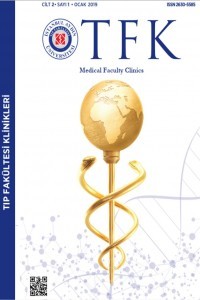Nurşah ERSEZEN, Bertan Koray BALCIOĞLU, Aylin ÖZDEMİR BAHADIR, Melis DENİZCİ, Hasan Ümit ÖZTÜRK, Müge SERHATLI, Filiz KAYA, Hilal YAZICI, Berrin ERDAĞ
İnsan Rekombinant Nano-Antikor Yapılarından Kanser Tanısı ve Tedavisine Yönelik Etken Madde Geliştirilmesi
Bu çalışmada faj gösterim teknolojisi ile yüksek çeşitliliğe sahip naiv insan ağır zincir değişken bölge (VH) nano-antikor kütüphanesi oluşturulması ve buradan Epidermal Büyüme Faktörü Reseptörü'ne (EGFR) spesifik yapıların seçiliminin gerçekleştirilerek kanser tanı ve tedavisinde kullanılabilecek aday moleküllerin geliştirilmesi amaçlanmıştır. Bu amaçla, sağlıklı insan periferal kanından izole edilen total RNA'dan cDNA sentezi yapılıp, bu kalıp üzerinden insan VH antikor genlerine spesifik primerler kullanılarak VH antikor genleri PZR yöntemiyle çoğaltılmıştır. Antikor kütüphanesi fajmid vektöre klonlandıktan sonra Escherichia coli (E. coli) amber supresör TG1 bakterilerine transforme edilmiştir. Enfektif fajların oluşumu sağlandıktan sonra faj eldesi yapılıp EGFR’ye afinite gösteren yapılar biyopanning döngüleri ile seçilmiştir.3 biyopanning döngüsü sonrasında rastlantısal olarak seçilen 60 farklı klonun antikor geni içerip içermediği PZR ile kontrol edilmiştir. Antikor geni tespit edilen 34 adet klonun EGFR’ye bağlanma afiniteleri faj-ELISA yöntemiyle değerlendirilmiştir. Değerlendirilen klonlardan 6 tanesinin EGFR'ye bağlanma afinitelerinin negatif kontrol olan BSA proteinine kıyasla 2 kattan fazla olduğu; 1 klonun ise 1.8 kat fazla olduğu görülmüştür. İleriki çalışmalarda burada belirlenen klonların karakterizasyonlarına devam edilmesi ve nano-antikor yapılarının üretimlerinin gerçekleştirilmesi planlanmaktadır.
Anahtar Kelimeler:
Monoklonal Antikorlar, Nano-Antikorlar, Faj Gösterim Teknolojisi, Epidermal Büyüme Faktörü Reseptörü
___
- 1. Nelson PN, Reynolds GM, Waldron EE. Demystified . Monoclonal antibodies. Mol Pathol 2000 53: 111–117.
- 2. Rajewsky K. The advent and rise of monoclonal antibodies. Nature 2019 575: 47–49. doi:10.1038/d41586-019-02840-w
- 3. Suzuki M, Kato C, Kato A. Therapeutic antibodies: their mechanisms of action and the pathological findings they induce in toxicity studies. J Toxicol Pathol 2015 28: 133–139. doi:10.1293/tox.2015-0031
- 4. Mahmuda A, Bande F, Al-Zihiry KJK, et al. Monoclonal antibodies: A review of therapeutic applications and future prospects. Trop J Pharm Res 2017 16: 713–722. doi:10.4314/tjpr.v16i3.29
- 5. Chames P, Van Regenmortel M, Weiss E, et al. Therapeutic antibodies: Successes, limitations and hopes for the future. Br J Pharmacol 2009 157: 220–233. doi:10.1111/j.1476-5381.2009.00190.x
- 6. Erdag B, Balcioglu BK, Ozdemir Bahadir A, et al. Identification of novel neutralizing single-chain antibodies against vascular endothelial growth factor receptor 2. Biotech and Applied Biochem 2011 58; 6: 412-422 . 7. Hamers-Casterman C, Atarhouch T, Muyldermans S, et al. Naturally occurring antibodies devoid of light chains. Nature 1993 363: 446–448. doi:10.1038/363446a0
- 8. Jovčevska I, Muyldermans S. The Therapeutic Potential of Nanobodies. BioDrugs. Springer International Publishing 2020 34: 11–26. doi:10.1007/s40259-019-00392-z
- 9. Harmsen MM, De Haard HJ. Properties, production, and applications of camelid single-domain antibody fragments. Appl Microbiol Biotechnol 2007 77: 13–22. doi:10.1007/s00253-007-1142-2
- 10. Li C, Tang Z, Hu Z, et al. Natural single-domain antibody-nanobody: A novel concept in the antibody field. J Biomed Nanotechnol 2018 14: 1–19. doi:10.1166/jbn.2018.2463
- 11. Khodabakhsh F, Behdani M, Rami A, et al. Single-Domain Antibodies or Nanobodies: A Class of Next-Generation Antibodies. Int Rev Immunol Taylor & Francis 2018 37: 316–322. doi:10.1080/08830185.2018.1526932
- 12. Chanier T, Chames P. Nanobody Engineering: Toward Next Generation Immunotherapies and Immunoimaging of Cancer. Antibodies 2019 8: 13. doi:10.3390/antib8010013
- 13. Oliveira S, Schiffelers RM, van der Veeken J, et al. Downregulation of EGFR by a novel multivalent nanobody-liposome platform. J Control Release Elsevier B.V 2010 145: 165–175. doi:10.1016/j.jconrel.2010.03.020
- 14. Van Der Meel R, Oliveira S, Altintas I, et al. Tumor-targeted Nanobullets: Anti-EGFR nanobody-liposomes loaded with anti-IGF-1R kinase inhibitor for cancer treatment. J Control Release Elsevier B.V 2012 159: 281–289. doi:10.1016/j.jconrel.2011.12.027
- 15. GP S. Filamentous fusion phage: novel expression vectors that display cloned antigens on the virion surface. Science 1985 228: 1315–1317.
- 16. McCafferty J, Griffiths AD, Winter G, et al. Phage antibodies: filamentous phage displaying antibody variable domains. Nature 1990 348: 552–554. doi:10.1038/348552a0
- 17. Marks JD, Hoogenboom HR, Bonnert TP, et al. By-passing immunization. Human antibodies from V-gene libraries displayed on phage. J Mol Biol 1991 222: 581–597. doi:10.1016/0022-2836(91)90498-U
- 18. Winter G, Griffiths AD, Hawkins RE, et al. Making Antibodies by Phage Display Technology. Annu Rev Immunol 1994 12: 433–455. doi:10.1146/annurev.iy.12.040194.002245
- 19. Pento JT. Monoclonal Antibodies for the Treatment of Cancer. Anticancer Res 2017 37: 5935–5939. doi:10.21873/anticanres.12040
- 20. Trenevska I, Li D, Banham AH. Therapeutic antibodies against intracellular tumor antigens. Front Immunol 2017 8. doi:10.3389/fimmu.2017.01001
- 21. Normanno N, De Luca A, Bianco C, et al. Epidermal growth factor receptor (EGFR) signaling in cancer. Gene 2006 366: 2–16. doi:10.1016/j.gene.2005.10.018
- 22. Seshacharyulu P, Ponnusamy MP, Haridas D, Jain M, Ganti AK, Batra SK. Targeting the EGFR signaling pathway in cancer therapy. Expert Opin Ther Targets 2012 16: 15–31. doi:10.1517/14728222.2011.648617
- 23. Xu MJ, Johnson DE, Grandis JR. EGFR-targeted therapies in the post-genomic era. Cancer Metastasis Rev 2017 36: 463–473. doi:10.1007/s10555-017-9687-8
- 24. Sigismund S, Avanzato D, Lanzetti L. Emerging functions of the EGFR in cancer. Mol Oncol 201812: 3–20. doi:10.1002/1878-0261.12155
- ISSN: 2630-5585
- Başlangıç: 2018
- Yayıncı: İstanbul Aydın Üniversitesi
Sayıdaki Diğer Makaleler
Açıklanamayan İnfertil Çiftlerde Erkek Faktörü: Sperm DNA Fragmantasyonu Değerlendirmesi
Nadir Bir Birliktelik: İleal Lipoma Bağlı İntususepsiyon ve Akut Apandisit
Sefa ERGÜN, Sangar M Faroq ABDULRAHMAN, Server Sezgin ULUDAĞ
Ayaktan Bakım Merkezlerinde Hasta Güvenliği Kültürü Algısına Yönelik Bir Alan Uygulaması
Mert SUDAĞIDAN, Samet UÇAK, Orhan YAVUZ, Mediha Nur Zafer YURT, Behiye Büşra TAŞBAŞI, Elif Esma ACAR, Veli Cengiz ÖZALP, Ali AYDIN, Şöhret AYDEMİR
Bel Ağrısı ile Başvuran Sakral Perinöral Kist Tanılı Bir Olgu Sunumu
Nurşah ERSEZEN, Bertan Koray BALCIOĞLU, Aylin ÖZDEMİR BAHADIR, Melis DENİZCİ, Hasan Ümit ÖZTÜRK, Müge SERHATLI, Filiz KAYA, Hilal YAZICI, Berrin ERDAĞ
